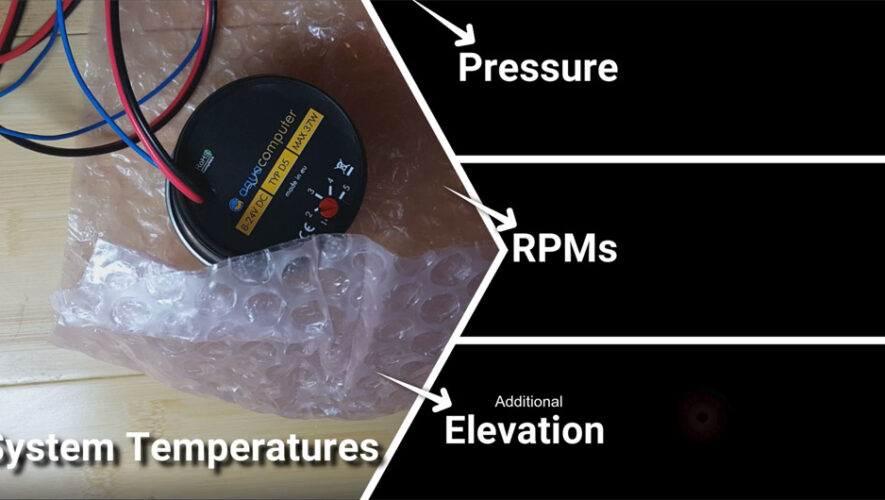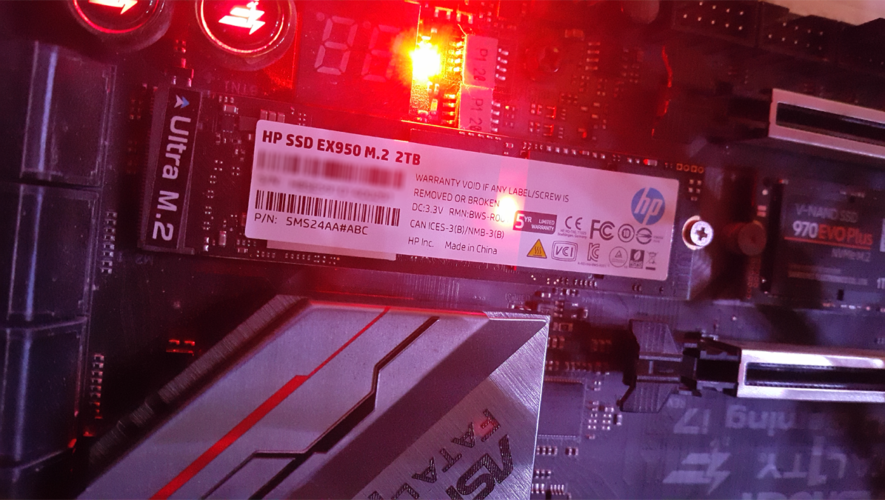Quick setup and test of D5 style Aquacomputer pump running at 12V vs 24V. Temperature testing was done in a real-world setup at ambient room temperature and not in a lab controlled environment. Ambient temperature control and monitoring of room temperatures were conducted via a traditional wall thermostat display in the next room (approximately 9 feet away through a doorway), with a thermostat setting of 75 degrees Fahrenheit (23.8889 degrees Celsius).
A conscientious effort was also made to conduct the benchmark and in-game rendering temperature tests only after the building HVAC system had cycled off, so any air blowing out of the vents would not skew system temperature results, which it can quite quickly do. The system was left running for at least 24 hours at the specified voltage before recording the benchmark and in-game rendering temperatures, except for the Hitman 2 benchmark, for which temps were recorded at 12V and 24V on the same day due to time constraints.
Transformer No Load Test:
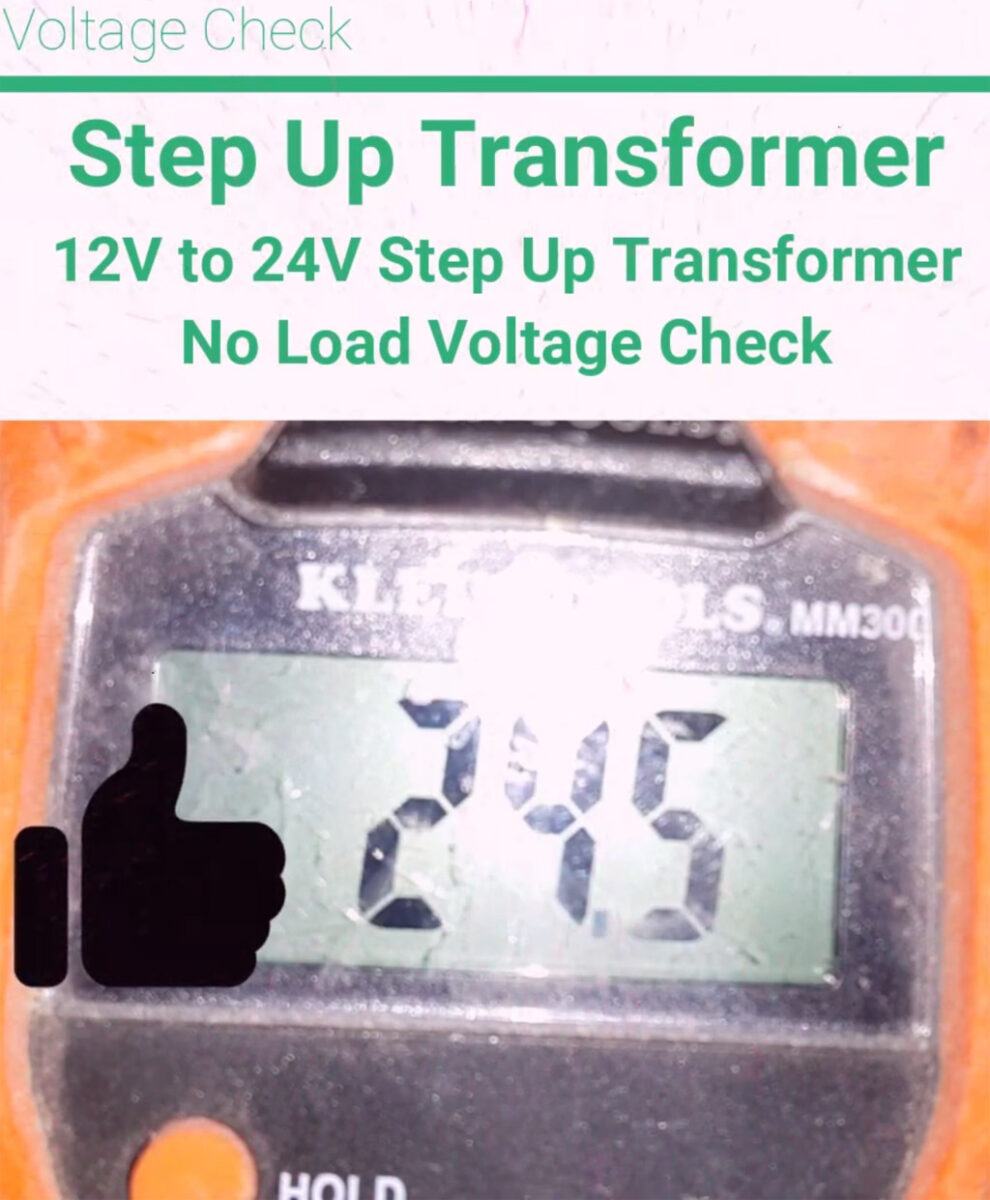
Does running this standard D5 style pump increase pump performance?
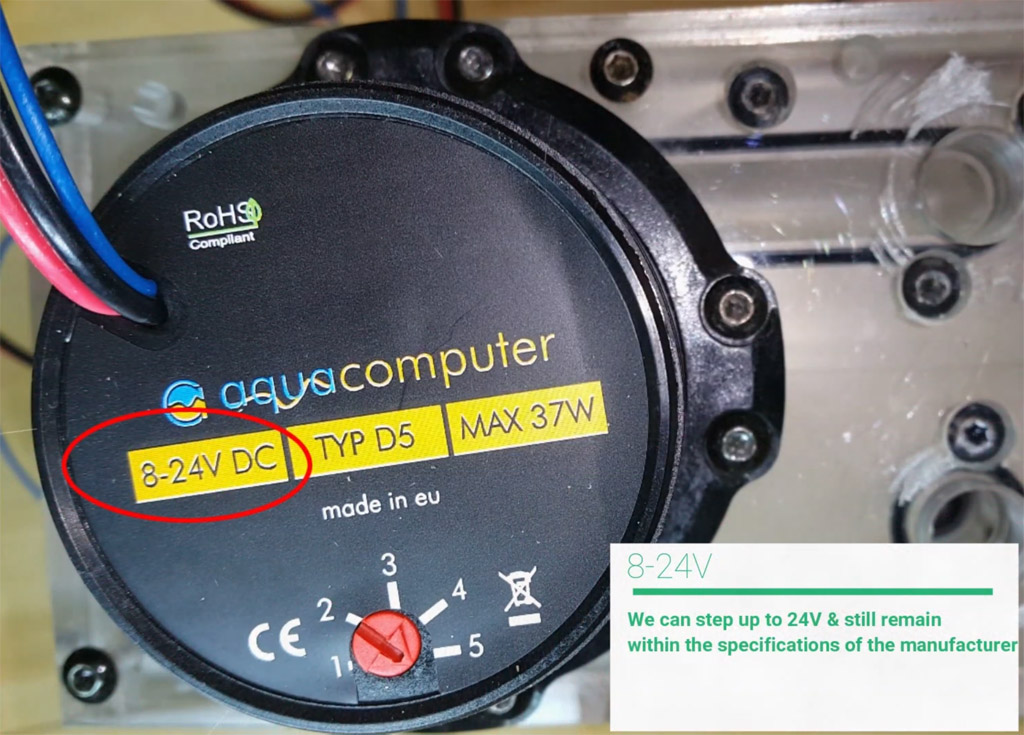
*The only D5 we had available to test were speed-dial (“vario”) versions. The specific model tested was the aquacomputer 41091 at highest power/speed level 5. Attached to an Alphacool Repack – Single Laing D5 – Dual Bay Reservoir
Test Criteria:
Using for test criteria:
- Pump Pressure
- RPM Speed
- Final pump elevation
- System temperatures
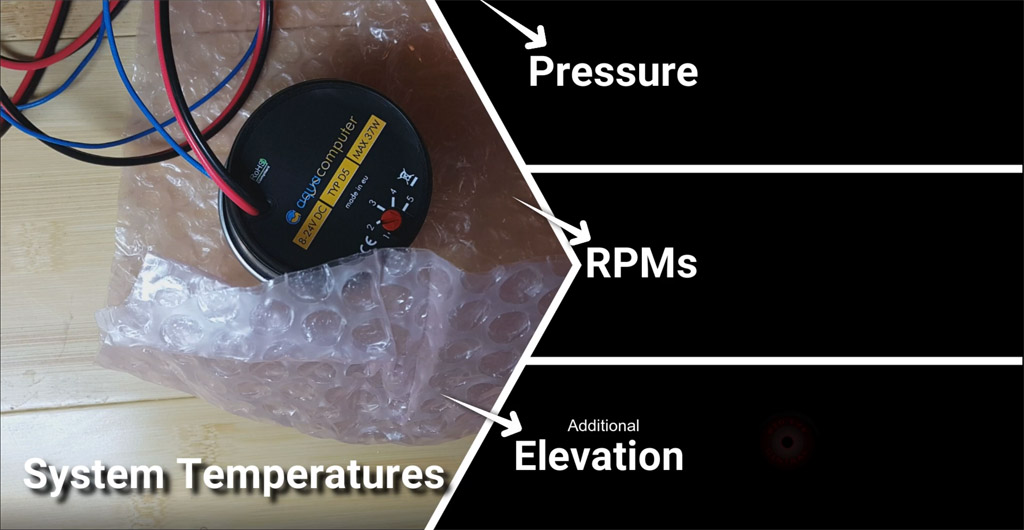
Pump Pressure:
Using a needle style pressure gauge located near the outlet of the pump, we observed an approximate 6 PSI reading for both setups.
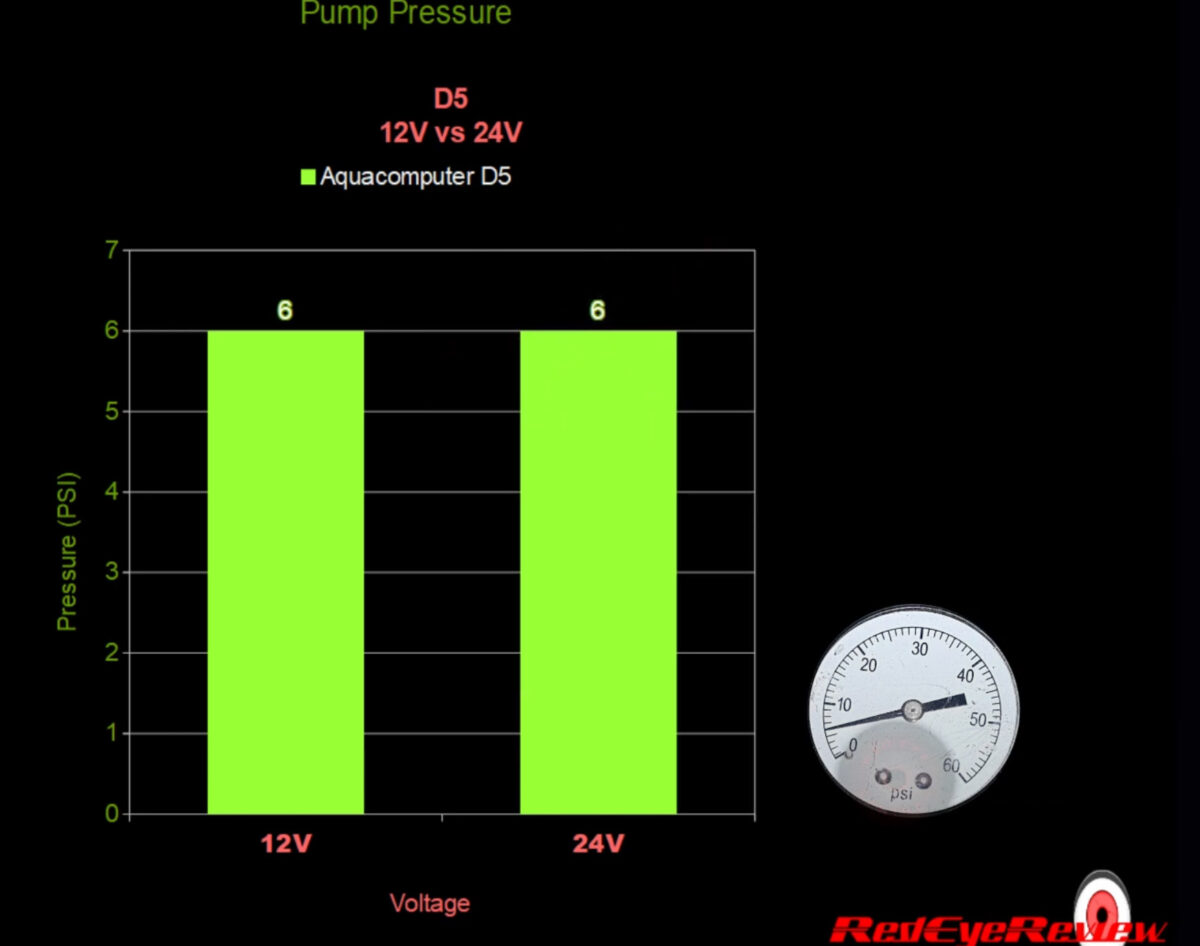
RPM Speed:
The RPMs fluctuated slightly between 3 or 4 RPM readings within approximately a couple hundred RPMs; it was a distinguishable pattern of 3 or 4 different readouts. We took the highest visually observed RPM readout for each setup. At 12V and 24V, we noticed a maximum RPM speed of 4950. So, we didn’t notice any difference in this comparison either.
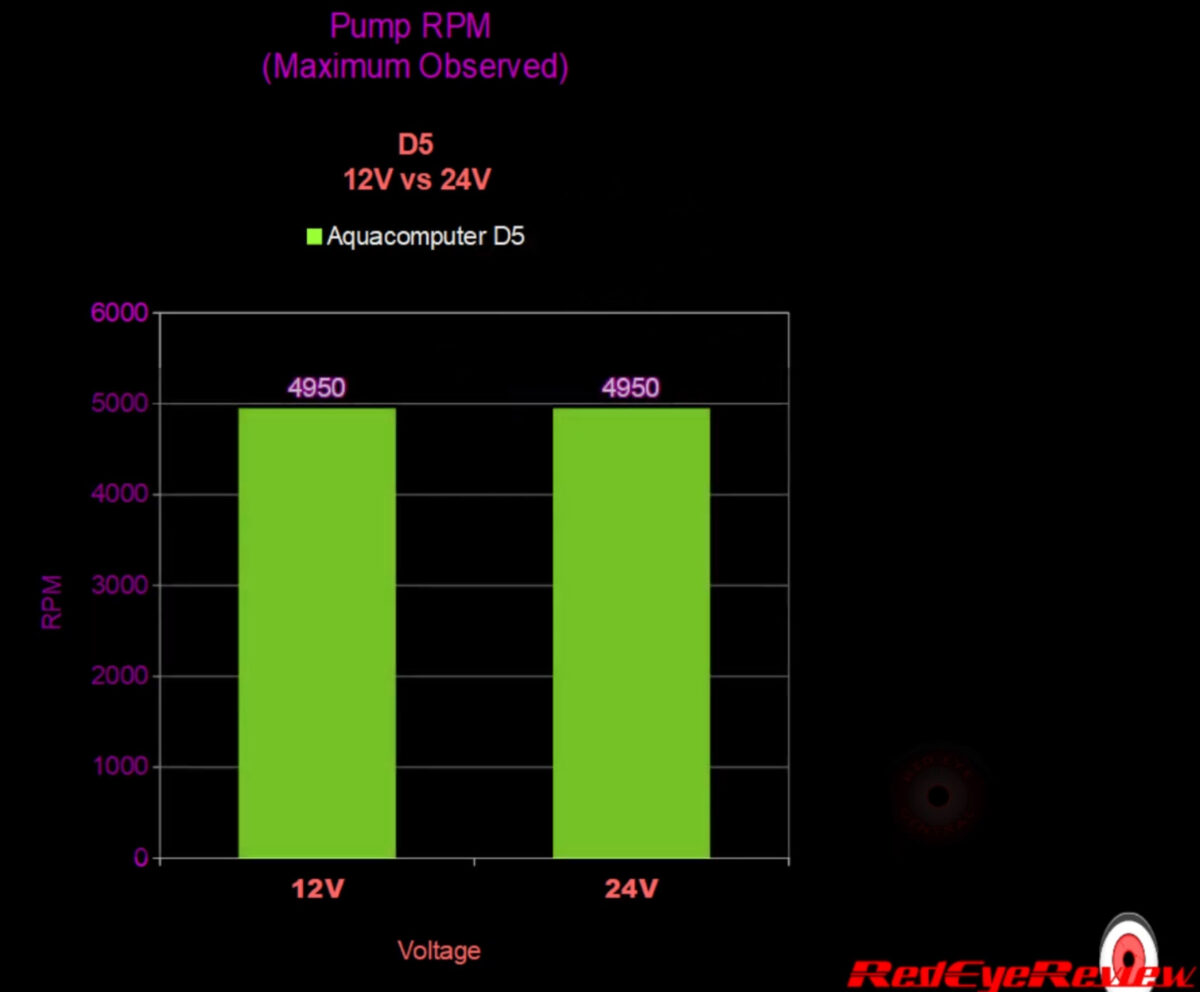
Final Pump Elevation:
Next we take a look at final pump elevation. Attaching a spare piece of tubing to the point where the fluid exits the test system, we monitored how far the pump could continue to elevate the fluid against gravity during each operating parameter. While operating at both 12V and 24V we observed a maximum of an additional 6 feet above and beyond the test system. So again, we didn’t notice any increase in the pumps’ performance to push the fluid to a higher elevation against gravity once it exited the test system. Both tests appeared to be identical. And we weren’t expecting to see a difference because the pump pressure was the same and the RPM speeds were the same, so it was pretty clear we weren’t receiving an increase in pump power or pump speed by applying the higher voltage. But we wanted to throw this test in so that we had a physical observation test where we were just using our eyes, as opposed to the other tests that were relying on gauges, readout displays, intricate circuitry, or speed signals. But we didn’t notice any difference in the pump’s ability to continue pushing the fluid up against gravity while exiting the test system.
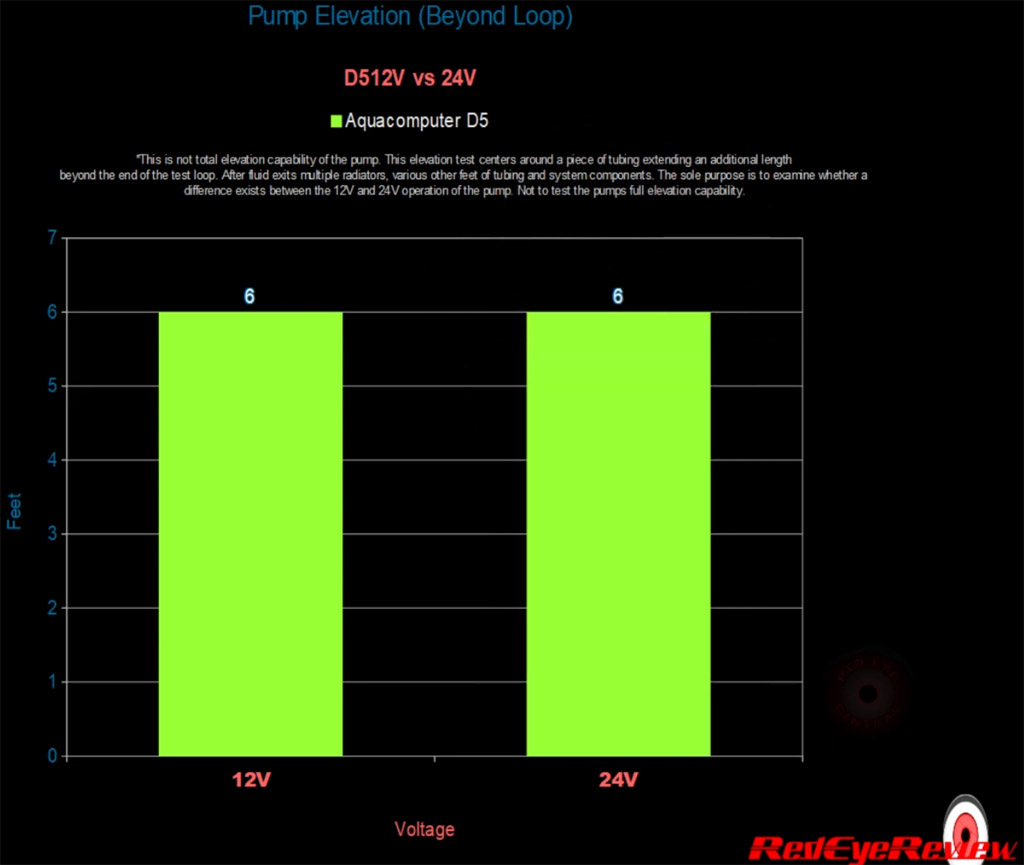
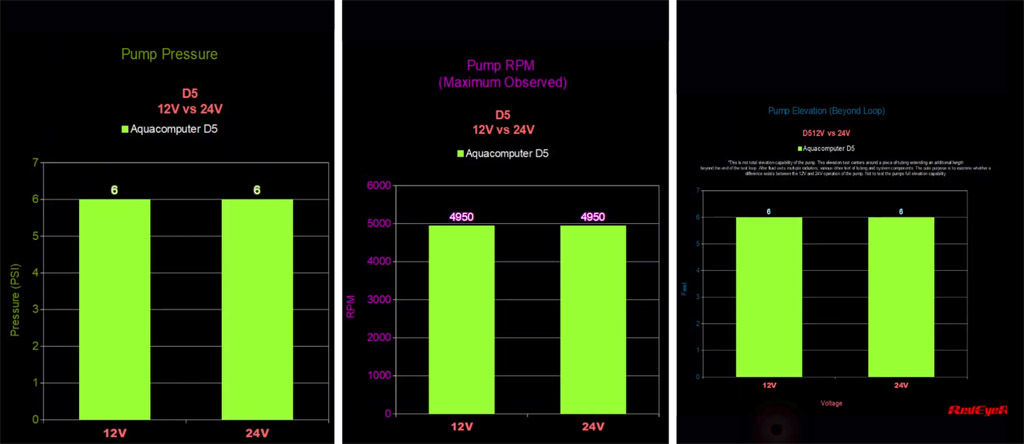
System Temperatures:
We ran some in-game tests and benchmarks at the end of the video posted above. We didn’t notice any obvious improvement in temperatures between these two operating voltages. But you can check out the video and see if you notice any trends in the onscreen readout in the video.
Final Thoughts:
Our rundown of this test concludes, and we would have to say that we didn’t notice any improvement by running at 24V vs. the standard 12V on the D5 water cooling pump that we had here, which was the Aquacomputer model.
We didn’t gain any pump pressure at the pump outlet; It read 6psi for both tests (at 12V and 24V).
We didn’t achieve any extra height elevation; The pump wasn’t able to pump to higher elevation against gravity at 24V than it did at 12V. And we didn’t notice any improvement in cooling performance.
There really didn’t seem to be a clear benefit to running a D5 at 24V unfortunately. Whereas something like a pmp-600 by Koolance, that does respond to a higher Voltage and you will gain more pressure and the ability to pump to higher elevation against gravity. But whether you would see an improvement in temperatures or not is debatable and may depend on your system setup; For something like the pmp-600 (which would introduce a greater amount of pump noise as well).
But getting back to the D5
You can check out the end of the video above for benchmark and in-game clips that you can observe and try to compare to see if you can identify any difference between 12V and 24V.
